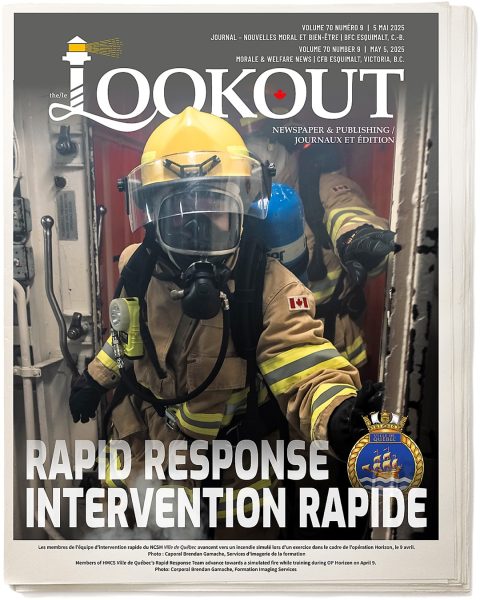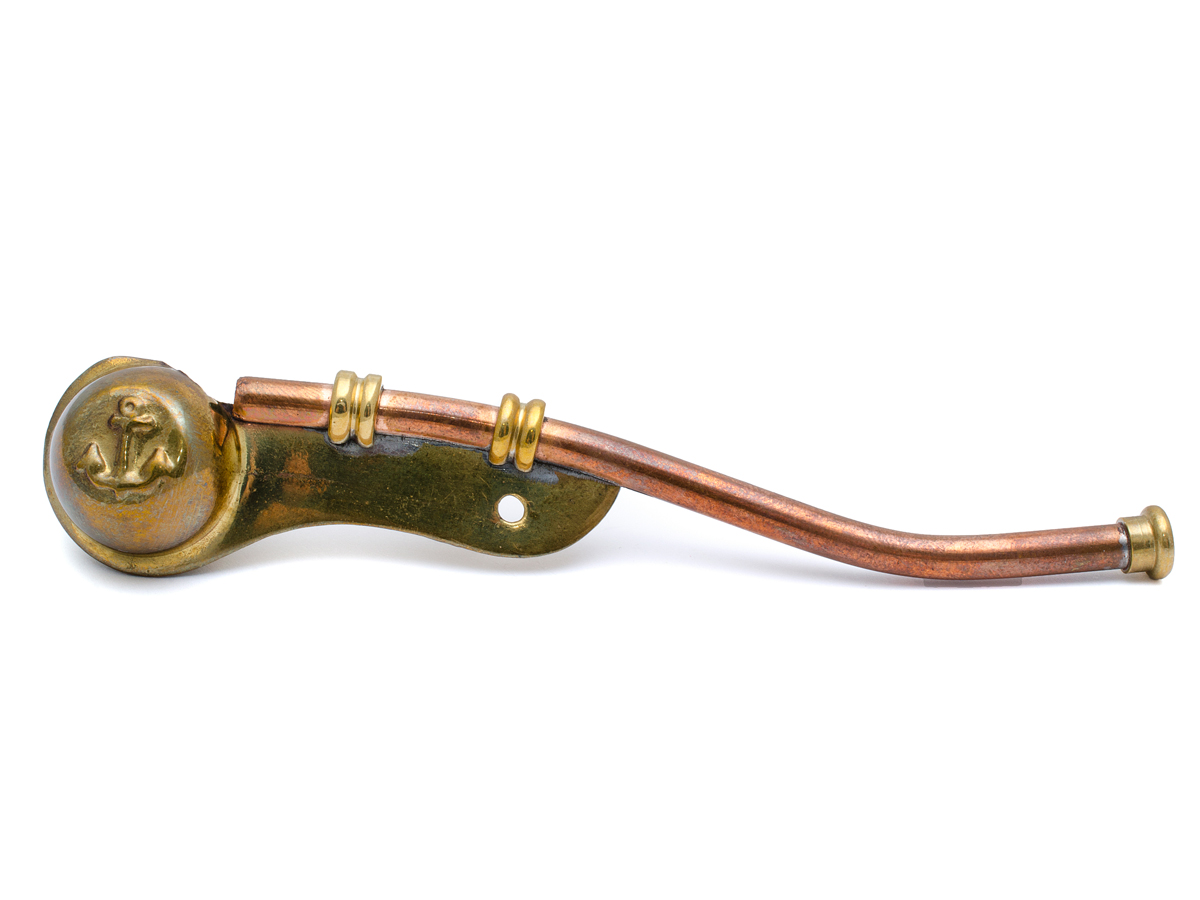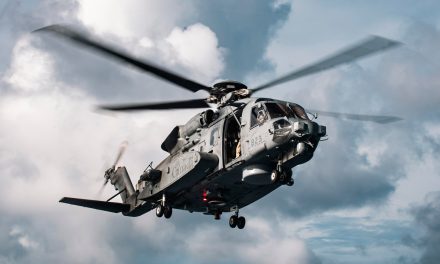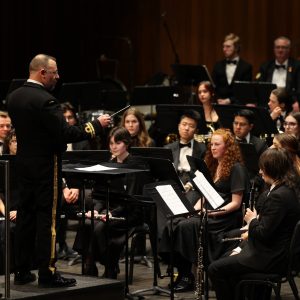Piping is a traditional method of passing orders in a naval setting. A verbal pipe is often replaced with the sound of a boatswain’s call, which can convey specific orders.
Naval lore states the use of a boatswain’s call in English ships can be traced back to AD 1248. The call can be worn as a symbol of rank, mainly because it can be used for passing orders. Until 1562 it was worn as a badge of office of the Lord High Admiral of England. In today’s navy, the boatswain’s call and chain are worn by the Chief Boatswain’s Mate, Quartermaster, and Boatswain’s Mate.
A boatswain’s call is played by holding it between your index finger and thumb, the latter laying along the bottom of the pipe, referred to as the gun. The orb-shaped buoy rests against the palm, and the fingers are used to throttle the air exit from the hole in the top of the buoy.
The boatswain’s call is relatively easy to master, as there are only two main notes; low and high, and three tones; plain, warble and trill. The low note is produced by blowing steadily into the gun with the hole of the buoy unobstructed by the fingers. The high note is made by moving the fingers over the buoy and partially throttling the exit of air. A warble is produced by repeatedly moving the fingers from the high to the low position. The trill is produced by vibrating the tongue, similar to how you roll the letter ‘R’.
Pipe the side is a 12-second pipe with very smooth transitions from low to high and back to low. It is used when a Commanding Officer arrives onboard, for Royalty, the accused when entering a Court Martial, or for the Officer of the Guard when the guard is formed.
The still, a high note held for eight seconds, calls all hands to attention as a mark of respect or to order silence. If done correctly, it should end very abruptly. The carry-on pipe is used to negate the still.
The general call is used to get the ship’s company’s attention and is used preceding a broadcast order.
A complex pipe consisting of all notes and tones a sailor might produce on a boatswain’s call is the pipe Hands to Dinner. Made daily at 1200, the pipe is an order and does not require verbal elaboration. This pipe is long and drawn out, and is the pride of any sailor who can do it perfectly.
Made to mark the beginning of the daily ship’s routine, the wakey-wakey pipe is a flourish of notes and tones designed to awaken even the deepest sleeper. In contrast, pipe down is used at the end of the ship’s daily routine, marking the time to adopt silent hours.
To a salty dog, the boatswain’s call is seldomly referred to as a pipe or whistle. As was often heard in my day, ‘A boatswain’s pipe is what the buffer smokes on the quarterdeck’.
You will find over 4,000 examples of Jackspeak in my book Jackspeak of the Royal Canadian Navy (2nd ed.).
The author of ‘Jackspeak of the Royal Canadian Navy’ and ‘Whiskey 601’, Mark Nelson developed a love of the Navy’s language and lifestyle over his 26-year career in the service. After retiring as a Chief Petty Officer Second Class, he now works as a Library Systems Specialist at Red River College Polytechnic in Winnipeg, Man.
Follow Mark on Twitter @4marknelson












